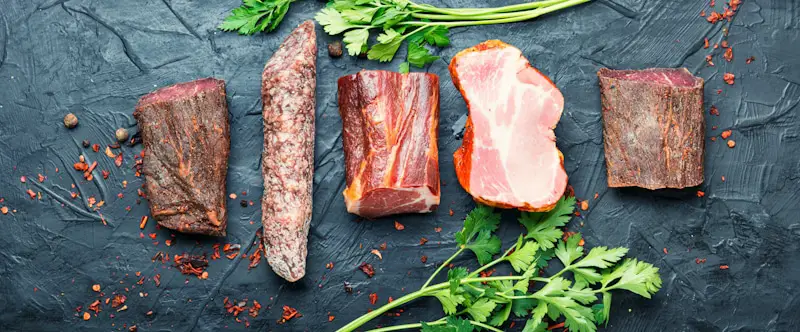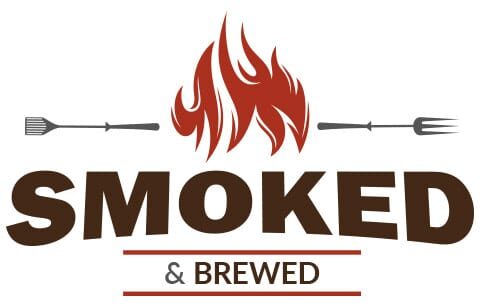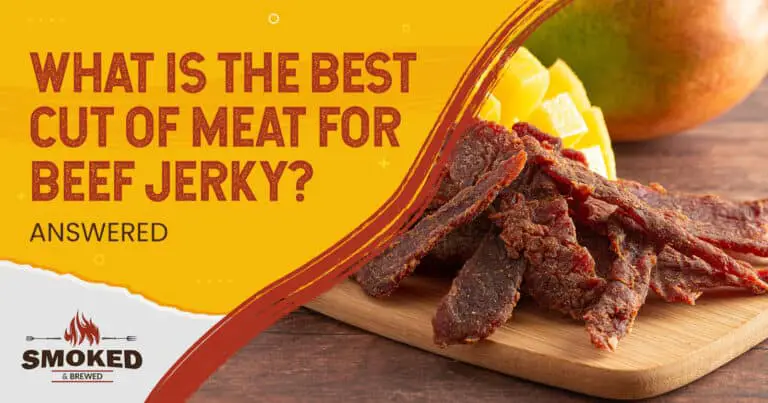Making high-quality and delicious beef jerky isn’t for the weak. It requires the proper cut of meat to get that texture and flavor. So, what is the best cut for beef jerky?
The best cuts include Top and Bottom Rounds, Lifters, and Pectorals. Still, you can use a wide variety of cuts, like mixing Flank and Skirt Steaks. These cuts meet all the beef jerky requirements— they’re affordable, lean, and packed with flavor.
Choosing the right cut might be difficult for you, considering the different types and textures you can find. So, we mention some of the most common beef cuts used to make jerky at home and by professionals. Here’s a list of the best cuts:

Best Cut Of Meat For Beef Jerky
Top Round
Its other names include the Inside Round Steak and London Broil. You get this cut the Round Primal. It’s an excellent source of cheap, lean, and sizable pieces that is the most common cut for commercial beef jerky production.
The meat itself is super lean, with barely any intramuscular marbling. While the flavor and tenderness might be lacking, it is a more affordable cut that doesn’t wholly compromise taste and texture.
Bottom Round
It is also known as an Oven or Round Roast. Similar to the Top Round, it comes from the Round Primal. The bottom Round typically has more bite than the top Round but is still an ideal choice for beef jerky.
The Bottom Round is also super lean with scarce intramuscular marbling. Its texture and flavor are similar to that of the top Round.
Eye of Round
This cut is another piece from the Round Primal. With a shape similar to the Tenderloin, the meat is a bit tougher than you expect. Its name originates from the long muscle in the midpoint of the Round. The fat content is minimal, so there is less flavor and tenderness. And because of its quality and leanness, the cut tends to be more expensive than the other Rounds.
Sirloin Tip
Its other names include the Knuckle and Round Tip, which you also get from the Round Primal. While it is a less common choice, the cut still has excellent taste and texture with minimal fat. It’s slightly more expensive but provides a delicious beef jerky.
[amalinkspro_table id=”1732″ new-window=”on” nofollow=”on” addtocart=”off” /]
Lifter Meat
Its other names include the Blade or Cap and Wedge Meat. Unlike the previous cuts, you get this cut from the Rib Primal, which comes from the exterior of the rib. It has a higher fat content than the former cuts, making it less lean but more flavorful and tender. Because of that, it tends to be more costly.
Flank Steak
It’s also called the Beef Flank or the Plank Steak and comes from the Flank Primal. The meat is lean and has long grains, and it gets its name since it comes from the cow’s flank. The cut has barely any fat or marbling, but unlike other lean cuts, it also has plenty of flavor and tenderness. So, you can understand why it is one of the most expensive cuts for beef jerky.
Pectoral Meat
Another name for this cut is the Special Trim, taken from the Chuck Primal. The chuck is a portion of the meat’s brisket, also known as the Special Trim. It has a moderate fat level and marbling with a delicious taste and texture and is also relatively inexpensive.
Picking The Best Cut Of Meat For Beef Jerky
As we mentioned, there are many cuts you can use to make beef jerky. Each one differs from the other based on certain features, which doesn’t necessarily mean one is better than the other. It all comes down to your preferences, but here are some criteria you can focus on to help you decide.
Fat Content
One of the essential criteria for choosing a meat cut to make jerky is the fat content. It would be best if you got a cut of meat with the lowest fat content possible.
Due to its structure, fat does not entirely dehydrate. Having excess fat in your jerky can cause it to turn rank and spoil much sooner than usual. Picking a cut of meat with minimal fat content can increase your jerky’s shelf life by a great deal.
That only applies if you plan on storing your jerky for a while. If you want to eat your jerky immediately, or maybe in a few days, you can make do with a fattier cut instead. In such cases, the fat content helps make the food jerky, juicier, and more flavorful.
Intramuscular vs. Intermuscular Fat
It’s vital to know about intramuscular and intermuscular fat. We refer to intramuscular fat as marbling. It moves between the muscle grains, and you cannot remove it. It adds a rich flavor to the jerky while keeping it tender and moist. That’s what most people look for when making jerky.
Intermuscular fat, meanwhile, surrounds the protein. You have to remove it before making your jerky. Try getting meat cuts with minimal intermuscular fat to make things simpler. 0% is the best amount. At the same time, cuts with marbling are ideal for cooking meat. Choosing a cut of meat with little fat content when it comes to jerky to make it last longer.
Price
It’s crucial to always get fresh, premium beef. You don’t need to get the most expensive cuts of meat since most pros don’t recommend it. The beauty of making jerky is that it converts chewier pieces into tender bites of beef. While making jerky with expensive meat sounds like a good idea, it’s a waste in a practical setting.

How To Get The Best Cut Of Meat For Beef Jerky
Buy Fresh
Always buy fresh beef. Do not get expired cuts or ones reaching their expiration date: the fresher your meat, the better. Avoid beef with dull spots, odors, cartilage, ligaments, or tendons. Making beef jerky at home means you can control everything the way you like. Examine each cut of meat to ensure you get what you need.
Buy Enough
Remember that you tend to lose 50% to 75% of the meat’s initial weight while dehydrating. Make sure to buy a sufficient amount of meat. A general rule is 3 to 1, which means that three lbs. of meat can turn into one lb. of jerky.
Know Your Butcher
Get friendly with the local butcher. They can be an excellent resource when you start preparing your jerky. If you play your cards right, a butcher can pre-slice your meat for you. That can save you time when making jerky.
If they have a commercial slicer, then the butcher can cut the beef into even slices as per your requirements. That can help your jerky cook uniformly in the oven, which is essential when making jerky from scratch.
Know Your Cuts and Sales
After researching each cut, you can keep an eye on specials and sales on the pieces you prefer. Superstores are also great places to shop for beef cuts or store jerky since all of them are available in large quantities.
Similar post: What Kind Of Brush Should You Use To Clean Your Grill? [TOP MODELS]
Final Words
Making your beef jerky can be a challenging experience, but an enriching one at that. One of the essential steps in making jerky is choosing the best cut of meat for beef jerky—the best part of making jerky is getting to control everything by yourself. So, experiment with the different cuts of meat, see what suits you best, and good luck!
More like this:
Scot has loved smoking food in his free time for the last few years. Each major holiday or off-weekend, Scot spends days testing and prepping new recipes for perfection.

